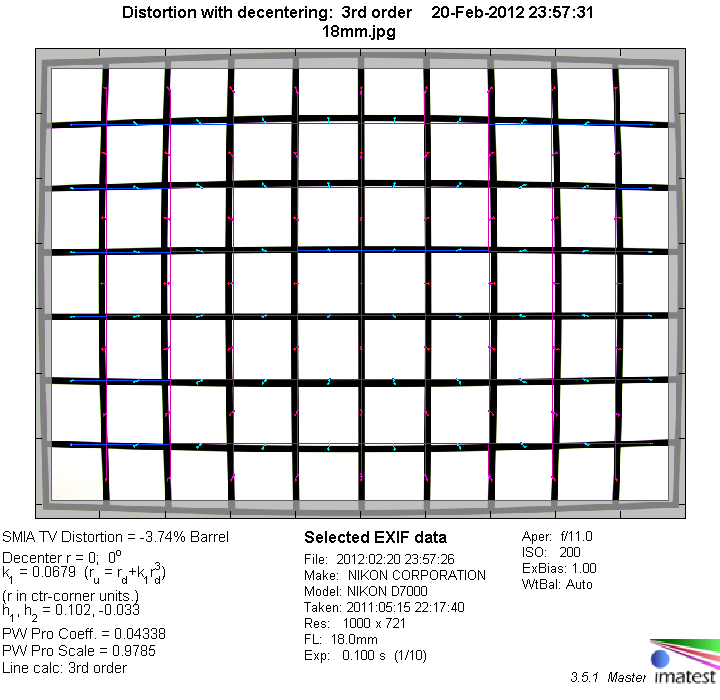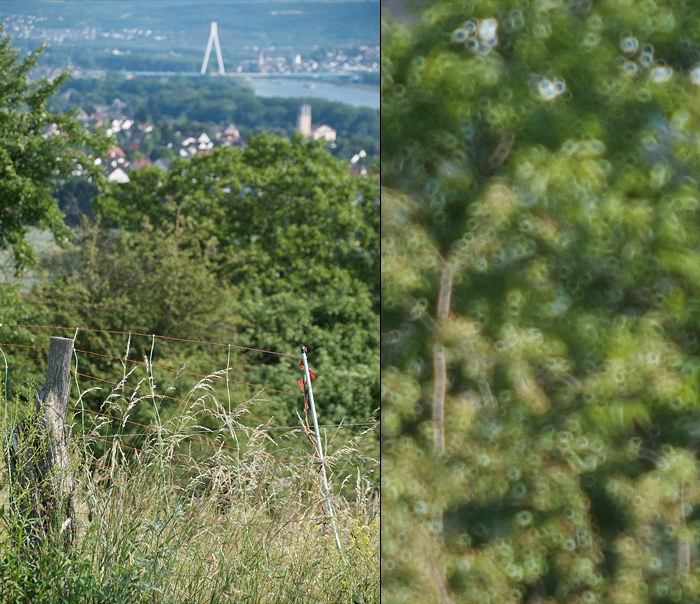|
Page 2 of 3

Distortion
Super zoom lenses usually show quite pronounced image distortion and the Tamron 18-270 VC PZD is no exception in this regard. At the shortest setting there is very pronounced barrel distortion of just below 4%. When zooming in, the type of distortion soon flips over to the pincushion kind. At 35mm, it's already quite pronounced and reaches a maximum of more than 2.1% at 80mm. Zooming in further, the amount of distortion decreases a little, but remains on a rather high level, even for a super zoom.
|
Move the mouse cursor over the focal length text marks below to observe the respective distortion
|
| 18mm |
35mm |
80mm |
130mm |
270mm |
|

|
The chart above has a real-world size of about 120x80cm.
The two images below, shot at 18mm and 35mm, give an impression of the impact of high distortion on real-world subjects.


Vignetting
Vignetting is quite well controlled at medium focal lengths, but more pronounced at the shortest zoom setting and also from 130mm onwards. As usual, stopping down helps to decrease the amount of light fall-off.

MTF (resolution)
In the image center, the lens delivers generally very good resolution at all tested focal lengths and apertures, reaching even excellent resolution at 18mm when stopped down.
The borders and corners are a different story, though. Throughout most of the zoom range the resolution is quite low here at large aperture settings. In the lower zoom range the sharpness can be increased here by stopping down. The best performance is shown at the shortest focal length again.
Towards the longer focal lengths however the border and corner resolution remains on a rather low level, even stopped down.
Please note that the MTF results are not directly comparable across the different systems!
Below is a simplified summary of the formal findings. The chart shows line widths per picture height (LW/PH) which can be taken as a measure for sharpness.
If you want to know more about the MTF50 figures you may check out the corresponding Imatest Explanations

Chromatic Aberrations (CAs)
CAs (color shadows at harsh contrast transitions) are well controlled at medium focal lengths. At 18mm and 130mm they are more pronounced and reach very high values at the longest focal length setting of 270mm.
However, CAs can easily be corrected in software or by the camera itself (most modern Nikon DSLRs remove CAs themselves if you shoot JPGs).

Bokeh
A slow lens like the 18-270 PZD is certainly not the first choice to separate the main subject from the background. But even with a maximum aperture down to as low as f/6.3 it's nonetheless possible to blur the background, especially with longer focal lengths or large subject to background distances.
We do not formally test the quality of background blur for such slow lenses, but feel the need to illustrate if a lens shows extraordinarily good or bad behaviour in this regard in our field tests. The Tamron 18-270 PZD unfortunately qualifies for a non-honorable mention.
For focal lengths in the upper range (roughly from 130 mm upwards) the bokeh quality is not stellar and certainly a bit on the rough side, but still acceptable. Below however the bokeh can be very nervous and distracting:

|